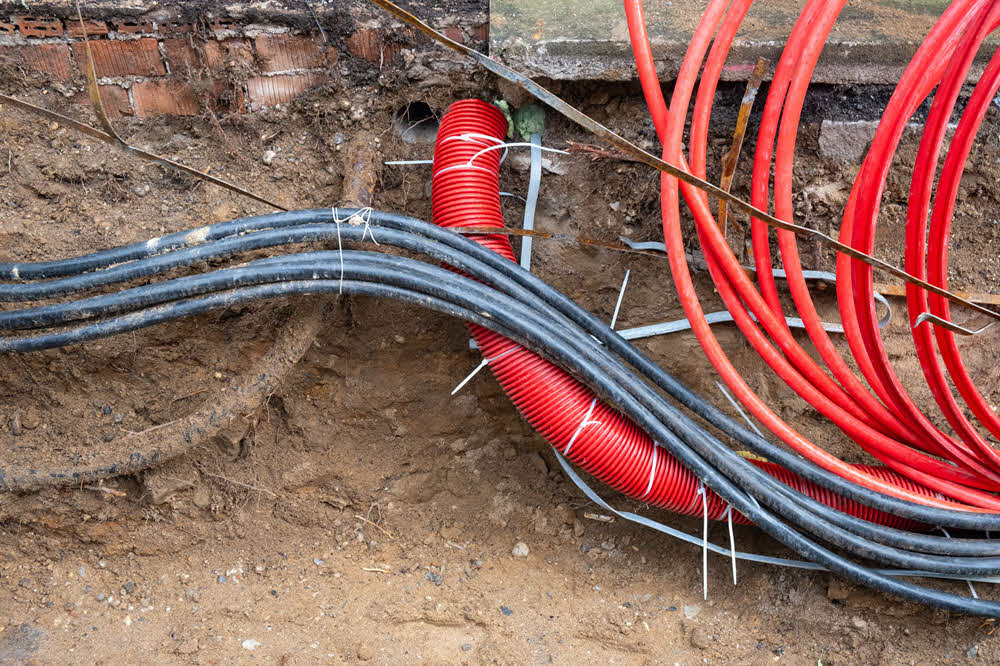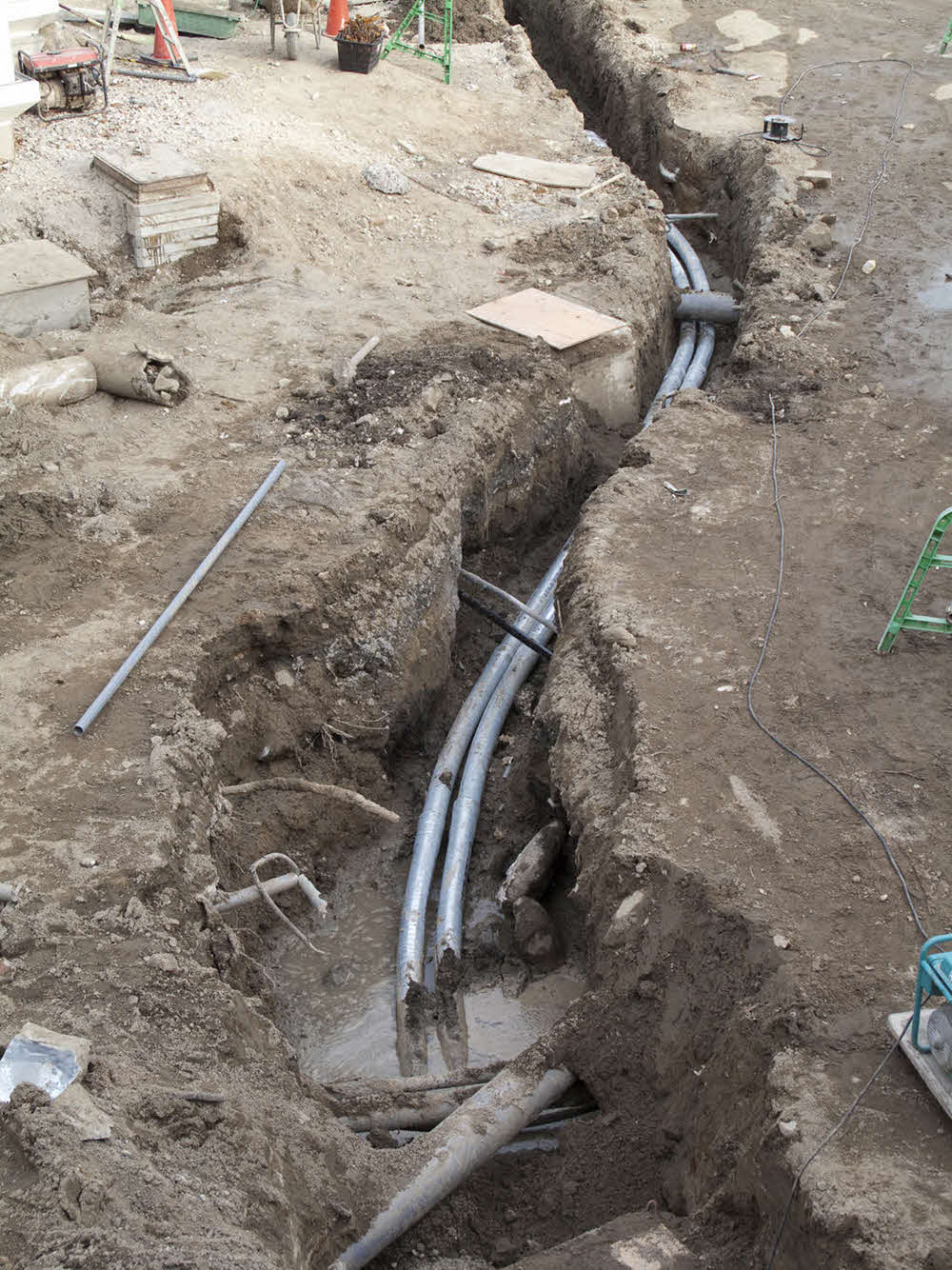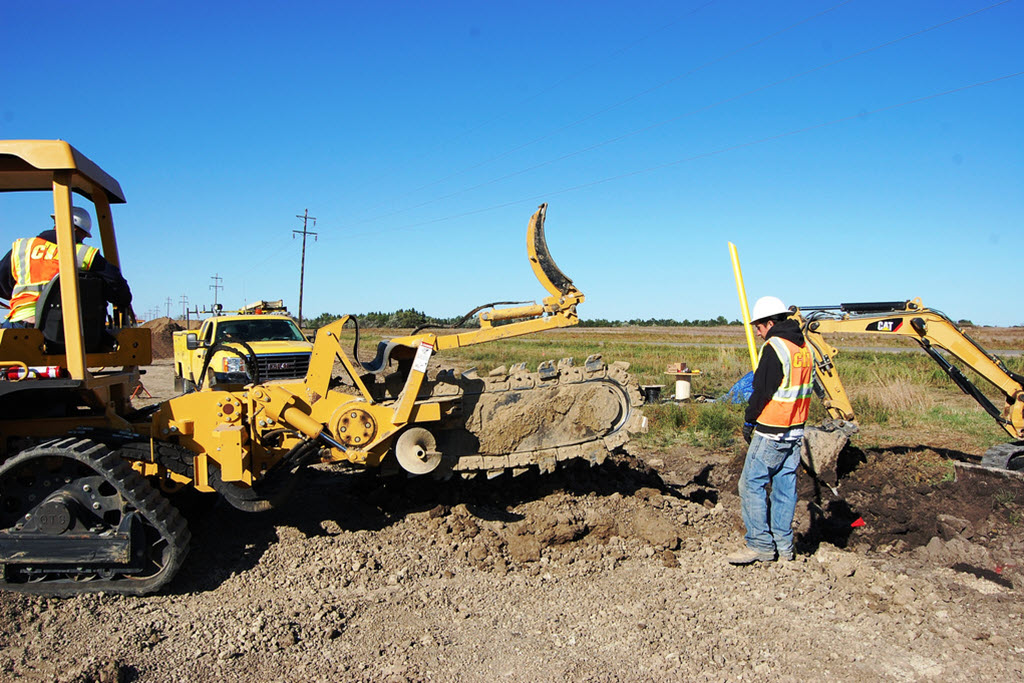Electrical Conduit Servicesin Imlay City MI
Expert Conduit Installation to Support Electrical and Data Systems
We Are Locally Owned & Operated For Over 37 Years
Contact Us Today!
We Serve Businesses In And Around The Following Cities:
About Electrical Conduit Services
The Epitome of High-Efficiency Electrical Infrastructure: The Indispensable Role of Conduit for Electrical Underground in Imlay City’s Commercial Properties
In the rapidly evolving business landscape of Imlay City, efficient and resilient infrastructure play a constructive part in ensuring the seamless functioning of commercial properties. One key aspect of this infrastructure is the conduit for electrical underground – a fundamental element that governs the dependability and longevity of the electrical systems of businesses everywhere. These conduits, when installed underground, offer superior protection, scalability, and sustainability to the electrical networks which makes them an indispensable component in the city’s commercial properties.
Unraveling the Process of Underground Conduit Installation
Any significant development begins by understanding the process. Installing a conduit underground for electrical systems entails rigorous, methodical steps, all structured to deliver consistent safety and reliability. The process commences with trenching for the electrical conduit, a crucial stage involving the excavation of a pathway to house the conduit. Imlay City, famed for its picturesque setting, blustery winters, and hot summers, necessitates the trench to be dug deep enough to protect the conduit from temperature fluctuations and other natural occurrences.
Installing PVC conduit underground is a widespread practice for residential and commercial properties, with the material’s excellent insulation properties and durability. After laying the PVC conduit for underground wiring, the conduits are then sealed and coated, securing them from moisture and corrosion. This step is especially useful when running an electric line underground in close proximity to a gas line. It’s a practice that necessitates stricter precautions to eschew any potential hazards.
Delving into the Benefits of Underground Electrical Conduit
The blend of technical proficiency and environmental sensitivity in this installation process yields several critical advantages. Running electrical wire underground through these conduits may seem more labor- and resource-intensive compared to overhead alternatives, but the benefits prove it a worthy investment.
They provide excellent barrier protection against external damage, be it physical disturbances or elemental hazards, effectively optimizing the safety. Another aspect lies in the reduced maintenance requirements, thus minimizing disruption while maximizing cost-effectiveness for businesses. Moreover, the enhanced aesthetics, by eliminating visual clutter, lend an unobstructed appeal to the infrastructure which can significantly contribute to the value of commercial properties in Imlay City.
Real-world Applications and Beneficial Impacts
Underground electrical conduit systems have numerous real-world applications, particularly in Imlay City’s commercial landscape. Businesses spanning from small retail units to expansive manufacturing facilities leverage the benefits of these systems. For instance, in sectors such as healthcare or tech, where uninterrupted power is crucial, underground conduit installations ensure constant electricity supply, avoiding outages that might disrupt critical services.
Another tangible example of its benefits can be reflected in Imlay City’s historical downtown. Here, running electrical conduit underground enhances the aesthetic appeal of the cityscape, by negating above-ground electrical clutter, thus contributing to the visual charm, tourism, and property value.
An establishment such as D&J Contracting, a well-versed entity in the fields of underground conduit installation and trench electrical line services, can be instrumental in providing these benefits. With their experienced team and top-tier resources, they guarantee results which are not only reliable and safe but also conducive to the company’s growth.
Conclusion
To sum up, the utilization of conduit for electrical underground in commercial properties is an integral aspect shaping the business environment in Imlay City. The advantages it offers – from safety, cost-effectiveness, to aesthetic appeal – streamline the business operations and contribute to the overall success and sustainability. By engaging with a proficient service provider like D&J Contracting, businesses can avail of superior quality, reliability and longevity in their electrical systems. One might even say that a city’s underground electrical conduit system represents its pulse, quietly, yet effectively fuelling its progress and prosperity.
Electrical Conduit Services Gallery


Call Us Today to receive your Free Quote for
Conduit For Electrical Underground in Imlay City
Serving: Imlay City, Michigan

About Imlay City, Michigan
In 1836, Connecticut businessman William H. Imlay began purchases areas of the forest here, and when the township was organized in 1850, it was named after him. In 1870, the Port Huron & Lake Michigan Railroad began building rail lines through the area, and chief engineer Charles Palmer purchased land in order to build a market and hotel. A post office began operating here on December 12, 1870 with Edward Palmer serving as the first postmaster. The community grew quickly to include 15 stores, a grain elevator, and several mills. In 1871, the community incorporated as a village named Imlay City.
In 1914, the city started building streetcar lines—a form of public transportation that was usually reserved for large cities. In April 1970, Imlay City celebrated its 100th birthday, and the residents voted to change Imlay City from a village to a home rule city by a two to one margin. The construction of Interstate 69 in the 1980s connected Imlay City with Flint, Port Huron, and Canada, leading to significant economic growth to serve the interstate travelers.
- According to the United States Census Bureau, the city has a total area of 2.37 square miles (6.14 km), all land.
- It is considered to be part of the Thumb of Michigan
- Imlay City intersects two major Michigan highways, Interstate 69 and M-53 (also known as Van Dyke Rd).
| Census | Pop. | Note | %± |
|---|---|---|---|
| 1880 | 971 | — | |
| 1890 | 1,251 | 28.8% | |
| 1900 | 1,122 | −10.3% | |
| 1910 | 1,174 | 4.6% | |
| 1920 | 1,211 | 3.2% | |
| 1930 | 1,495 | 23.5% | |
| 1940 | 1,446 | −3.3% | |
| 1950 | 1,654 | 14.4% | |
| 1960 | 1,968 | 19.0% | |
| 1970 | 1,980 | 0.6% | |
| 1980 | 2,495 | 26.0% | |
| 1990 | 2,921 | 17.1% | |
| 2000 | 3,869 | 32.5% | |
| 2010 | 3,597 | −7.0% | |
| 2020 | 3,703 | 2.9% | |
| U.S. Decennial Census | |||
As of the census of 2010, there were 3,597 people, 1,356 households, and 841 families living in the city. The population density was 1,517.7 inhabitants per square mile (586.0/km). There were 1,600 housing units at an average density of 675.1 per square mile (260.7/km). The racial makeup of the city was 82.9% White, 0.9% African American, 0.3% Native American, 0.6% Asian, 12.1% from other races, and 3.2% from two or more races. Hispanic or Latino of any race were 29.0% of the population.
There were 1,356 households, of which 37.9% had children under the age of 18 living with them, 42.8% were married couples living together, 13.5% had a female householder with no husband present, 5.7% had a male householder with no wife present, and 38.0% were non-families. 31.9% of all households were made up of individuals, and 15.5% had someone living alone who was 65 years of age or older. The average household size was 2.64 and the average family size was 3.43.
The median age in the city was 33 years. 30.2% of residents were under the age of 18; 9.2% were between the ages of 18 and 24; 26% were from 25 to 44; 21.7% were from 45 to 64; and 12.8% were 65 years of age or older. The gender makeup of the city was 47.4% male and 52.6% female.
As of the census of 2000, there were 3,869 people, 1,496 households, and 936 families living in the city. The population density was 1,690.4 inhabitants per square mile (652.7/km). There were 1,599 housing units at an average density of 698.6 per square mile (269.7/km). The racial makeup of the city was 88.65% White, 0.57% African American, 0.28% Native American, 1.32% Asian, 7.78% from other races, and 1.40% from two or more races. Hispanic or Latino of any race were 19.20% of the population.
There were 1,496 households, out of which 34.1% had children under the age of 18 living with them, 45.5% were married couples living together, 13.0% had a female householder with no husband present, and 37.4% were non-families. 33.2% of all households were made up of individuals, and 17.5% had someone living alone who was 65 years of age or older. The average household size was 2.53 and the average family size was 3.26.
In the city, the population was spread out, with 28.3% under the age of 18, 11.1% from 18 to 24, 28.5% from 25 to 44, 16.9% from 45 to 64, and 15.3% who were 65 years of age or older. The median age was 32 years. For every 100 females, there were 87.5 males. For every 100 females age 18 and over, there were 83.4 males.
The median income for a household in the city was $32,436, and the median income for a family was $43,267. Males had a median income of $36,066 versus $22,396 for females. The per capita income for the city was $16,021. About 6.4% of families and 8.1% of the population were below the poverty line, including 6.0% of those under age 18 and 12.7% of those age 65 or over.
Imlay City has five public schools, which are all part of Imlay City Community Schools, and one private school. The public schools include Weston Elementary for Kindergarten through 2nd grade, Borland Elementary for 3rd through 5th grade, Imlay City Middle School for 6th grade through 8th grade, and Imlay City High School for 9th through 12th grade. There is also Venture High School, an alternative school for students who do not succeed at the traditional high school. The private school in Imlay City is the Imlay City Christian School, which is a non-denominational, private Christian school located just outside town; it was established in 1952 by parents of the local area.
The Ruth Hughes Memorial District Library was first opened on January 27, 1990. It was constructed on the funds Ruth E. Hughes left for the Township Library through her will upon her death in March 1985. The library is governed by a seven-member board of trustees, with representation from Imlay City, Imlay Township and Attica Township.
The Imlay City Historical Museum was established in 1978 and is run by a private, non-profit organization. While its historical records primarily showcase Imlay City, Imlay Township, Attica Township, Arcadia Township, Goodland Township and the surrounding areas, it also has had such items as a World War I handgun exhibit. In front of its building is an historical caboose that was decommissioned some time ago. The building was a train station for the Grand Trunk Western Railroad, until the Imlay City Historical Commission wanted to lease the building from Grand Trunk Western after they decided to bulldoze it in 1971. Grand Trunk Western decided to lease the land to Imlay City, and from Imlay City, the Historical Commission leased the building for a museum. Work was started on restoring the building, and in 1978 it was completed. The open house ceremony and dedication was held on November 9, 1979.
Call Us Today to receive your Free Quote for
Conduit For Electrical Underground in Imlay City
Related Services in Imlay City, Michigan
We Serve Businesses In The Following Zip Codes:
48007, 48015, 48021, 48026, 48035, 48036, 48038, 48042, 48043, 48044, 48045, 48046, 48047, 48048, 48050, 48051, 48066, 48071, 48080, 48081, 48082, 48083, 48084, 48085, 48088, 48089, 48090, 48091, 48092, 48093, 48098, 48099, 48225, 48230, 48236, 48310, 48311, 48312, 48313, 48314, 48315, 48316, 48317, 48318, 48397